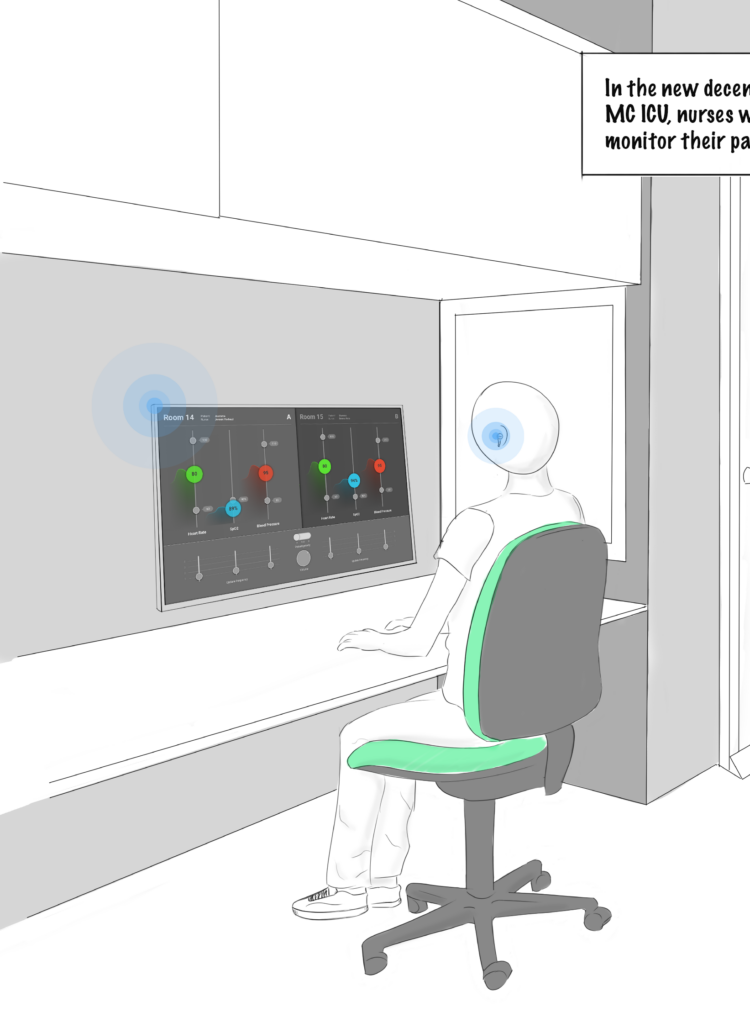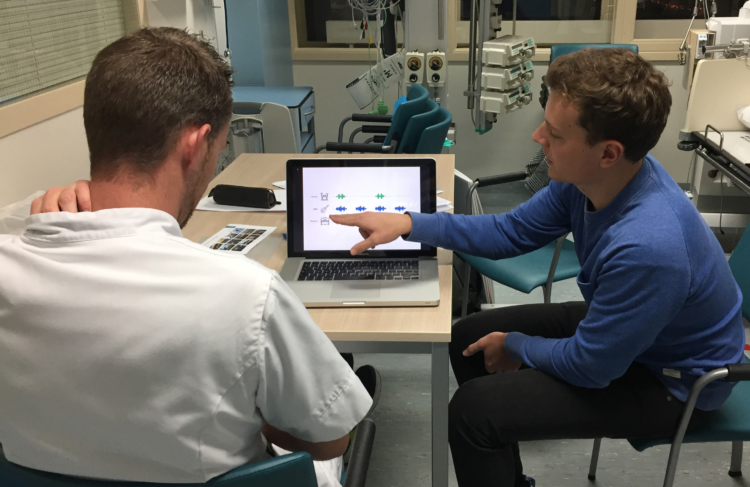CareTunes: Music as a nurses’ monitoring tool
Sep 2017 - ongoing
Musical streaming of patient vital signs in critical care.
CareTunes is a concept that challenges the clinical utilization of audible alarms (beeps) of monitoring devices found in Intensive Care Units (ICUs). The concept is developed as a continuous musical stream that summarizes patient vital signs. The stream presents the signs in a coherent, logical and pleasant way to the clinicians (mainly nurses).
See this video for a demonstration of the concept.
CareTunes exactly responds to the initial call for daring and fresh design solutions that are beyond classical views on what alarms should be like. CareTunes shows that critical alarms can be beautiful.
Koen Bogers
Purpose of CareTunes
With CareTunes, nurses can have a clear understanding of the overall criticality of the patient’ status. It shows the patient’ trend toward recovery or deterioration, as well as the sudden changes in the vital signs: heartrate, blood pressure and oxygen saturation. These three vital signs, which are always monitored in an ICU, are translated into music.
CareTunes attempts to offer much more information in the sonification of patient data. During a contextual research in collaboration with Rosèl van den Berg (VanBerlo), nurses revealed that current alarms carry a low level of information. Alarms tend to be used as a reaffirmation by using narrow alarm limits, causing more alarms to sound. By wearing an earpiece that plays a continuous musical stream, nurses can constantly be aware of their patients’ health without having to listen to the cacophony that is caused by alarms. The continuous measurement of vital signs does not create such a distraction and has a new meaning. Sudden changes in the vital signs are indicated by a faster tempo or musical dissonance. Nurses and doctors can recognise this disturbance in music and assign a criticality level and diagnose the source of the problem if any.


Creating CareTunes
CareTunes is an interactive prototype that is developed by Koen Bogers, as part of his graduation project, in coorperation with Erasmus MC Rotterdam, medical advisor Joseph Schlesinger MD and artistic advisor Yoko K. Sen. In an iterative design process several versions of this concept were designed, tested and evaluated with nurses at Erasmus MC. Simultaneously, contextual research was conducted to discover the experiences these nurses have regarding sounds.
Issues with audible alarms in critical care
The aim of designing audible alarms is to inform clinicians about the critical changes in the patient’s physiological data. This data correspond to the patient’s current vital signs as well as the status of the overall recovery. Currently, there is an excessive amount of non-actionable audible alarms in ICUs. Clinicians, especially nurses, ignore the majority of the alarms and do not (immediately) attend to the functions the alarms individually represent. Such situation makes the design of audible alarms redundant and the sounds themselves undesired. However, critical information may lie in ignored alarms.
Alarm related undesired clinical behaviour is the symptom of a larger problem to be investigated, not the immediate problem to be solved. However, many design attempts have sought for immediate sound-based solutions. Managing the acoustical parameters of the audible alarms of monitoring devices or decreasing their occurrence frequency are some examples. These methods fail to consider the function of the audible alarms in depth and their role in the daily practices of clinical staff. While doing research and design regarding alarm fatigue, it is therefore essential to reconsider the fittingness of the monitoring and alarm systems in critical care.
CareTunes' future
With the help from VanBerlo, CareTunes was presented at the Embassy of Health exhibition, part of the Dutch Design Week. CareTunes will be a showcase for the possibility that pleasant sounds can be informative and represent criticality in ICUs. We hope to start discussions on the validity of critical alarms systems and how we can reshape the future of these systems in complex environments.